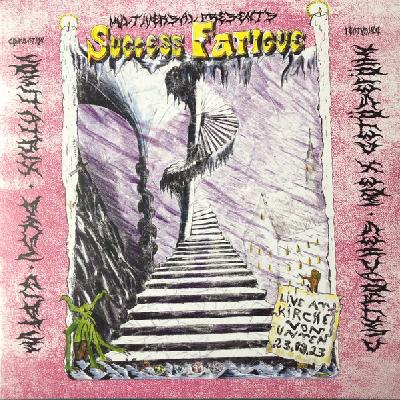
MANDAÏ DISTRIBUTION - independent music distributor
Copyright : 2002-2025
| SEARCH | |
| BROWSE BY | |
|
- Artists - Labels - Formats - Styles - Mid prices - Last items - LP - 10in - 7in - Mandaï Gift Vouchers |
|
| NEWSLETTER | |
|
- Subscribe |
|
| LOGIN | |
|
Sign in or Register. |
|
| CONCERTS | |
| 06/02/2026 No Metal In This Battle @ Kulturfabrik | |
| 06/02/2026 Zea @ Db's | |
| 06/02/2026 It Dockumer Lokaeltsje @ Db's | |
| 18/02/2026 It It Anita @ Le Botanique | |
| 28/02/2026 Mmuurr @ Le Laboratoire | |
| 16/04/2026 Zu @ Wilde Western | |
| More concerts ... | |
| NEWS | |
| 24/12/2025 Merry X-Mas ! | |
| 27/11/2025 New releases will be soon added ! | |
| 27/10/2025 Update done ! | |
| 25/10/2025 Working on next update. | |
| More news ... | |
| FEEDBACKS | |
|
A... (Belgium) Excellent! Thanks.... |
|
|
k... (Belgium) Arrived already. Could listen to this mu... |
|
|
d... (Belgium) Excellent... |
|
| More feedbacks ... | |
| DESCRIPTION | ||
 | FELDMAN, MORTON (BY LENIO LIATSOU) For Bunita Marcus Label : God Records Year : 2015 Format : 2xLP Style : Experimental / Contemporary Music Availability : In stock Price : 39.20 € - BUY | |
| Description : | In the 1980's, Morton Feldman composed two large-sized pieces for his favourite instrument, the piano. Both pieces, Triadic Memories (1981) and For Bunita Marcus (1985), clock in at about 90 minutes. Both compositions are excellent examples of the group of works that they belong to: Triadic Memories demonstrates the complexity and tonal opulence of Feldman's pattern compositions from 1977 through 1983, whereas For Bunita Marcus shows the stripped-down, almost dismissive structures of his last works created from 1984 to 1987. Feldman himself described For Bunita Marcus as a piece in which he 'seriously grappled with the idea of meter'. 'I was very interested in this whole problem of meter and the bar line. I was so interested that I started to write a piece in which I took meter very seriously. I saw that nobody knew how to notate. Sometimes, Stravinsky! In my notation I'm close to Stravinsky; that is, meter and rhythm actually being simultaneous and also being more grid-oriented, a balance between rhythm and meter. For Bunita Marcus is essentially made up of just three-eight, five-sixteen and two-two. Sometimes the two-two would have musical content, which was at the end of the piece. Sometimes the two-two acted as silences, either on the left side or the right side or in the middle of the three-eight and thefive-sixteen, and I was using meter as a construction, not rhythm but meter and the time, the length of what is going on.' Exceprt from liner notes by Sebastian Claren | |
| FROM THE SAME ARTIST | |||

|
FELDMAN, MORTON (BY LENIO LIATSOU) - For Bunita Marcus
Label : God Records Format : 2xLP - Price : 39.20 € | ||
| BEST SELLING | |||

UNIVERS ZERO Uzed (CD) - 14.50 € Sub Rosa |

PRESENT Le Poison qui rend Fou (Expanded / Remastered) (2xCD) - 19.70 € Cuneiform Records |
||

UNIVERS ZERO Live at Triton 2009 (CD+DVD) - 18.00 € Sub Rosa |

EX, THE (WITH GETATCHEW MEKURIA & FRIENDS) Moa Anbessa (LP) - 20.70 € Terp Records |
||
| NEW RELEASES | |||

V/A Success Fatigue (LP) - 12.40 € Musikfonds |

DAZZLING KILLMEN Dig Out the Switch (LP) - 29.40 € Skin Graft Records |
||

KAISER, HENRY (AND P.ST) The Wolf at the Door (2xCD) - 16.60 € Sub Rosa |

V/A Dead / MoE (7in) - 6.20 € Rock is Hell Records |
||

LEVY, CLARA Outre-Nuit (CD) - 13.50 € Sub Rosa |

YOWIE Taking Umbrage (CD) - 15.80 € Skin Graft Records |
||

LED BIB Hotel Pupik (CD) - 14.70 € Cuneiform Records |

CUNTROACHES S/t (Cassette) - 13.50 € Skin Graft Records |
||
| -MORE NEW RELEASE- | |||